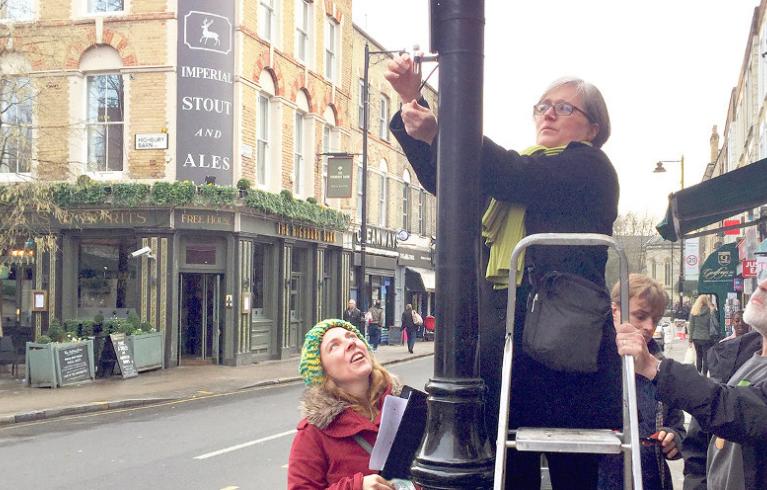
Key information
Publication type: General
Publication date:
Contents
Do you live on a main road outside the North and South Circular roads? Do you want to know how polluted the air on your street is?
Almost 10,000 Londoners die prematurely each year as a result of long term exposure to Nitrogen Dioxide, mainly from diesel vehicle emissions. Many more Londoners find their existing heart and lung conditions are worsened by breathing polluted air.
Communities living in London especially on main roads are routinely exposed to health damaging levels of diesel particulate pollution.
The Mayor of London is preparing to consult on an Ultra Low Emission Zone (ULEZ) to reduce the number of polluting vehicles. He is proposing to start it in central London in 2019. In 2020 he proposes to extend the boundaries to the North and South Circular roads for cars, vans and motorbikes, and Londonwide for lorries, coaches and buses.
I'm interested to find out how much pollution the communities living on main roads in boroughs that are outside of the North and South Circular are regularly exposed to. If the pollution levels prove to be high, then I will ask the Mayor to consult on including cars, motorbikes and cars roads in the Londonwide scheme.
I am looking for individuals and community groups living on the boundaries or outside of the North and South Circulars that are willing to get involved in measuring air pollution on their local polluted streets over the summer. It won’t take long and is easy to do.
I plan to visit communities around London to talk about measuring polluted air. If you are interested and want to get involved, please get in touch with me ([email protected]).
In the meantime, I have attached some simple information about measuring Nitrogen Dioxide and where to buy and how to use diffusion tubes.
How to measure pollution with diffusion tubes
(You can also download this as a PDF to print it out).
Nitrogen dioxide measurement is easy and cheap. It costs about £10 per site, and each site will take 20 minutes of your time spread over 4 weeks.
Getting the kit
I use the following equipment supplied by Gradko. Other manufacturers make similar kit. For each location you will need a diffusion tube, a clip and a strap to attach it to the lamp post.
How to use the tubes
The tubes come with detailed instructions. You attach them with the clips and/or straps to a location where you want to measure pollution (we put ours above head height using a ladder to avoid tampering) and then remove the lower white end cap, noting down the date and time.
After 4 weeks you can take them down, putting the white end cap back on and noting the date/time again. You then attach sticky bar-codes to them (so you can match the results to the locations) and send them back to the manufacturer to be analysed. You should receive your results within two weeks.
Choosing places to locate the tubes
You need a lampost alongside a road so that the tubes can be installed consistently above head height. It’s worth thinking about who will be interested in the results. So putting them near a range of places that people go makes sense.
- School
- Doctor’s surgery or health centre
- Local shops
- Place of worship
- Bus stop
- Community centre etc
What to do with your data
Mapping for Change have a great data collection website which feeds into their community-sourced pollution map. You can also input data on the go using their Android app.
I am collecting data specifically around the North and South Circular so that we can find out if there is a need for the Mayor’s proposed Ultra Low Emission Zone to extend beyond the proposed boundary. Please email your results and I’ll include them on my map and use them to assess whether to campaign for a wider ULEZ.
Related documents
Caroline Russell's letter to outer Londoners on air pollution
Caroline Russell guidance on using diffusion tubes